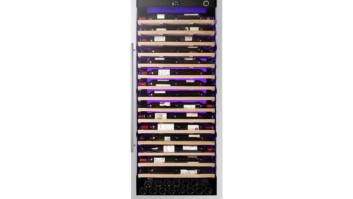Arlington, Va. – The Consumer Electronics Association’s (CEA) Innovation
Movement launched Thursday a “Spectrum Crunch Clock” to help Americans
visualize the economic costs of delay in spectrum reform.
The action comes in response to the Federal Communications
Commission’s (FCC) plan announced March 16, 2010 to address the nation’s
shortage of wireless broadband capability by repurposing unused broadcast
spectrum.
The
is an attempt to answer “intense lobbying by broadcast television stations”
that has stalled progress on the program, the association said.
CEA’s Innovation Movement is comprised of over 100,000 “engaged
citizens who believe innovation is critical to American global leadership and
economic growth,” the CEA said.
The body “urges consumers to take action and write their members
of Congress in support of the need for more spectrum for new and innovative
wireless broadband services.”
The CEA views wireless spectrum as a limited resource that fuels
portable digital devices like laptops, e-readers, tablets and smartphones.
“As anyone frustrated by dropped calls or slow data downloads
knows, wireless spectrum is limited and is not being used efficiently enough to
provide the connections consumers demand,” the CEA said in a statement
announcing the clock. “More spectrum cannot be created; so it is essential to
responsibly utilize this resource.”
The FCC has engaged a bipartisan plan to use incentive auctions
to migrate underutilized broadcast spectrum to broadband services.
A voluntary incentive auction would enable interested television
broadcasters to get paid for returning their underutilized spectrum. It is
estimated the auctions alone would generate approximately $33 billion for the
U.S. Treasury and allow the spectrum to be used for wireless broadband and
other services, the CEA said.
This estimate assumes all reclaimed spectrum is auctioned.
According to the association, the calculated value of lost
opportunity to the U.S. economy is $7.6 billion each year that additional wireless
spectrum is not made available for broadband purposes.
“Incentive auctions will create jobs, enhance innovation, reduce
the national debt and amply compensate television broadcasters that choose to
participate,” the CEA said in a statement on the issue. “Most important, such
auctions will end the spectrum crunch so consumers can enjoy robust wireless
broadband capability that will power our innovation-driven economy.”
The NAB recently submitted a study conducted by former FCC
official Uzoma Onyeije to the FCC showing the broadcasters’ position that the
need for additional spectrum by wireless carriers is “over stated” and based on
questionable assumptions “designed to achieve a particular result.”
Instead of a reallocation of
broadcast spectrum, Onyeije supports “innovative solutions that have been
previously deployed and currently being developed to address capacity needs,
and which can be utilized much faster and more efficiently.”
“Instead of engaging in productive dialogue, we’ve come to expect childish gimmicks and hysteria from our CEA friends. The facts are these: broadcasters gave back 108 MHz of spectrum less than two years ago, some of which has yet to be deployed. NAB has never opposed the notion of broadcasters voluntarily giving back additional spectrum, so long as non-volunteers are held harmless. Finally, we would suggest that CEA ask whether Alabamans who are crediting local television with saving their lives during tornado coverage last week whether TV spectrum is ‘underutilized,” the NAB said in a statement addressing the Crunch Clock Thursday.













